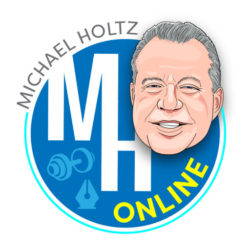A new Netflix documentary about the creation of the 1985 song and video, “We Are the World,” which raised money for Ethiopia famine relief, brought back a flood of memories.
I was in high school.
For the first time I can recall, I felt part of something bigger than myself.
Not just that single song. There was a whole movement of events in a short time period.
It started with “Do They Know it’s Christmas?” the Band Aid tune that featured a choir of British and Irish musical superstars. They had been shepherded by Bob Geldof, the Irish rocker who fronted The Boomtown Rats.
The song was released December 3, 1984.
Like the millions of people who heard the tune, I was deeply moved. Not just by the music, but to action.
I was a reporter for my high school paper, The Horlick Herald. I used the power of my pen and my spot on the editorial page to implore my fellow students to support famine relief efforts.
And they did.
We collected hundreds of dollars. Mr. Pavao, the school’s choir director, incited choir members to raise funds. If I remember correctly, there was a concert where money was raised.
We joined the rest of the world in doing “something.”
Was it enough?
Could it ever be enough?
if we helped save one life…
”We Are the World” debuted on March 7, 1985, and was played simultaneously on radio stations across the country. The record became a quadruple platinum bestseller, and sales of it and related merchandise raised nearly $70 million for famine relief.
The song propelled USA For Africa, which helped organize large-scale events like Live Aid, a concert held simultaneously in London and Philadelphia, and brought together some of the biggest names in music.
It was July 1995.
I was at newspaper camp at the University of Wisconsin-Whitewater (newspaper camp—super nerdy and totally into being a journalist when I grew up).
The college students who were our chaperones were glued to Live Aid. So were we.
We were part of something bigger than ourselves.
Back at school, money kept coming in for famine relief. There was another choir collection.
I don’t remember how much we raised over the course of that year or so, but to a high school kid it was a big deal.
It was an exciting time.
My little editorial column made something happen.
My friend, Paul, and I heard about another USA For Africa event, and we were intent to join in.
Hands Across America was set for Sunday, May 25, 1986.
While it was a huge success, “We Are the World,” was criticized for focusing on overseas hunger relief while ignoring the problem in our own country.
Enter Hands Across America.
People were invited to donate $10 or more to be part of a continuous line of people holding hands for 15 minutes. The line was meant to stretch from one end of the contiguous United States to the other.
All money raised would be sent to local charities fighting hunger in communities across the country.
Early on the morning of May 25, Paul and I boarded a rickety school bus.
Without our parents.
So very Generation X. We lived on hose water and the occasional sandwich from a parent with a stocked refrigerator.
We packed sandwiches, or something, for the two-and-a-half-hour ride from Racine, Wisconsin, to Bourbonnais, Illinois, where we would clasp hands with strangers to be part of this epic event.
Who would do this today?
Hand sanitizer wasn’t a thing.
We were risking our lives and we didn’t even know it.
It was exciting to be part of something bigger than ourselves, and to see millions (well, hundreds that we could see with our own eyes) of people come together for a common cause.
How often did this happen, anyway?
I mean, besides the Super Bowl?
Turns out, it didn’t really happen that day either. There were gaps in the line.
Hands Not Quite Across America.
Hands Almost Across America.
We didn’t know until later that the chain of people fell apart in several places.
At the end of that day, we were exhausted from riding a school bus to and from the middle of nowhere.
But we did something.
The cause may have changed but the drive to want to do something for the greater good has never left me.
That feeling of excitement we felt getting on that school bus or of collecting money from my school mates is still therez
It still lives in me.
I feel it when I share my cancer story with someone for the first time.
Or when I help someone understand how their ostomy appliance works.
Or a lawmaker tells me they support the legislation I’m advocating for.
Or I talk about the importance of peer-to-peer support for men facing cancer.
There is more likely today to be a Zoom Call Across America than a continuous human chain, but the excitement, the joy is still palpable.
We really are the world.






No Comments